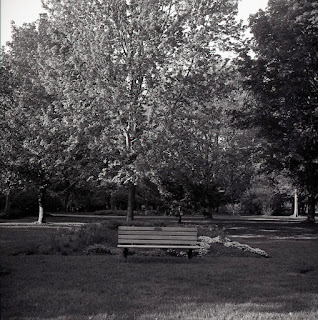To say that I was nervous to begin shooting film would be an understatement. The only film cameras I had shot up that point were the little 110mm cameras that took the 110 film cartridges. These were simple point and shoot that were not very good cameras. I jumped on the digital bandwagon early and went trough a series of little point and shoot cameras before moving up to more advanced bridge and DSLR cameras. It was very intimidating to start using a film SLR camera and even more so to try a TLR and a rangefinder. I was expecting to get nothing but crap from these cameras. I have been very surprised by the results that I have gotten.
Obviously as I got more comfortable with the cameras and film the better I feel the photos I have taken have gotten. All of these cameras have been either manual focus or zone focus (except the Trip 50 which is an automatic point and shoot) which took me a while to get used to, especially on the TLR. I find that working with manual focus for most of the year (I rarely shoot digital these days and automatic focus seems like a pain now) has made me a better photographer. And almost all of these cameras are manual settings or have the option of shooting of shooting in full manual mode. Shooting in manual has given me a more complete understanding of how photography works. Learning about the Sunny 16 Rule has helped a lot with understanding using manual settings. I also find I more "picky" and shoot a lot slower now, even when shooting digital. I have never been a spray and pray shooter, I am even more methodical and slower now.
I have really enjoyed shooting film, and have shot a lot of rolls over the last year and as I look back I can really see the progress I have made in my photography by shooting film.
Minolta X-700 slr first roll of film
Minolta X-700 slr after a few months
Yashica A TLR first roll of film
Yashica A TLR after about 9 months of shooting.
Yashica Minister D rangefinder first roll of film
Yashica Minister D rangefinder after about six months of shooting.
I definitely think that shooting film has made me a better photographer. It has made me slow down, think and compose my shots better. It has also made me more knowledgeable about using manual settings and focusing. I look forward to seeing where this will take me with my art.

















































